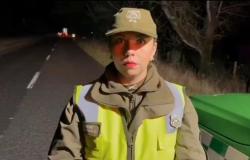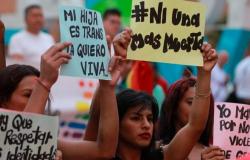Approximate reading time: 3 minutes, 9 seconds
The death of Colonel Enrique Villuendas seemed to be more announced than that of Santiago Nasar, the protagonist 76 years later of García Márquez’s testimonial novel.
Suffice it to remember a detail that occurred the afternoon of the day before, September 21, 1905, in the Correctional Court of Cienfuegos while the young lawyer defended his liberal co-religionist José “Chichí” Fernández, accused of insulting the police.
There was a scandal in the house of justice whose alleged purpose was to take advantage of the confusion to liquidate the uncomfortable representative of the defense. And from the Lower House of Congress. The correspondent of the opposition newspaper La Lucha told his readers about the untimely entry into the premises of police chiefs Illance, Cueto, Ruiz and Soto. Those with revolvers in hand evacuated the public and some pointed at the chest of the young colonel of Independence, whom the hack described, “admirable in courage and cold blood.”
That afternoon the blood did not reach the river. In this case to the bay. The reporter himself concluded his note for the capital newspaper with this prediction: “I do not believe there will be elections here and I foresee bloody conflicts if a moment of lucidity and sanity does not enlighten those who can and should avoid days of blood and desolation.”
At eight o’clock on what was to be his last morning, Villuendas recounted the previous events in a letter to his boss, General José Miguel Gómez, dated in room number one of the La Switzerland hotel. “Now at 10 am (it is eight o’clock) an assembly will be held at Pernas’ house by the Liberal Executive Committee. Last night I was able to convince myself that, both on the train in the morning and at the correctional facility in the afternoon, it was a plot against my life hatched by Frías. When we meet I will tell you all this. The one who was going to kill me is a mulatto, Mantilla, who opportunely made a mistake and said that for twenty cents he wouldn’t expose himself to me killing him. The one in the afternoon was Illance himself, who pointed his revolver at me from two steps away. But don’t take any care for me; Here the problem is whether the people are going to vote or not, and in the first case whether they should be taken unarmed to a certain slaughter. Yesand the train goes Villuendas.”
Instead of the residence of Dr. Luis Pernas Salomó, the aforementioned meeting of the liberal executive in the Pearl of the South was finally going to take place in the signatory’s own room. In addition to the head of the party and the doctor, Luis López Vilas, Juan Fuentes, José Antonio Álvarez Curbelo, Francisco Silva, Emilio Orrego, Buenaventura Pérez and Gabriel Quesada attended the meeting. In the next room was Chichí Fernández.
The people of the chief of the moderate Cienfuegos, and senator of the Republic, José Antonio Frías, prepared the plot as if it were a script of the nascent, and for a long time to come, silent seventh art. The rumor provided the missing spice: the liberals were storing bombs in La Switzerland to blow up the Police Headquarters.
The clock showed eleven o’clock in the morning when Commander Miguel Ángel Illance entered the San Carlos inn 103. He was accompanied by the guard Herminio Parets. Nicanor Sánchez, the owner of the establishment, led the couple to the second floor of his business and immediately went down to return to his duties.
Illance knocked on the door of the “headquarters” of the Liberals from Pearl-South. He was opened by Villuendas himself, who upon learning that the head of public order had a search warrant with him, concluded the small assembly. His companions left the room and headed towards the stairs. The host asserted before the police officer the immunity granted to him by his status as a parliamentarian. It also extends to his domicile. The other agreed on the validity of the argument, but it would have to be reflected in a proceeding.
When the brown Nicanor was asked to sign the document, he claimed that he was illiterate and said that he would go in search of a certain Trelles, a man he trusted.
But at that moment a scene happened that was not in the script. Chichí left room number two and suddenly found herself in front of Illance. He shot him and the commander’s life began to count down, in minutes. Policeman Parets, who had just begun to write the document, drew his revolver. Villuendas, noticing the gesture, grabbed him and the two engaged in a hand-to-hand fight. Chichí shot Parets and wounded him. Immediately afterwards he pulled the trigger again and crossed Andrés Acosta, another guard who was walking up the stairs at a double pace, from chest to back.
Despite the bullet and without having his attacker within range, Acosta went to where Villuendas and Parets were still struggling. And at point-blank range he shot the 30-year-old colonel. Deadly by necessity.
The previous one, I reiterate, was the version of the bloody events in La Switzerland collected in the middle of the last century, in his book “12 famous deaths”, by the journalist Manuel Cuéllar Vizcaíno.
Photo caption: Although too blurry, the image shows the moment when the burials of Villuendas and Illance coincide for a moment on Paseo de Arango (current 19th Street) towards the Reina cemetery, the only one in the city at that time.
Contrast the official funeral procession of the Chief of Police that advances behind (on the right in the image), with the leader of the liberals who is accompanied by Colonel Paulino Guerén and five or six other people.
Visits: 0






